Current Position of the Market
S&P 500 Long-term trend: If the market strength persists, the long-term trend may need to be re-evaluated.
S&P 500 Intermediate trend: S&P 500 intermediate P&F count to 2270 has now been met, but there are higher counts that could still be filled before a serious reversal take place.
Analysis of the short-term trendis done on a daily-basis with the help of hourly charts. It is animportant adjunct to the analysis of daily and weekly charts which discuss longer market trends.
Market Overview
Upon reaching the lowest of the three projections I gave in the last letter (2770), S&P 500 had a thirty-point pull-back. The trigger was the Fed’s first interest rate increase in a year and the likelihood that there will beseveral more next year.Although the consolidation is only three days old, the Point & Figure chart shows that a lot of stock has already changed hands, and we may be ready to make an attempt at resuming the uptrend.
There are potential higher projections for the uptrend which started at 1810, even beyond those given last week, so we may not be ready for a serious correction just yetdespite a sentiment index which still shows extreme greed. Additionally, market breadth, as depicted in the NYSI (below, courtesy of StockCharts.com) has lagged noticeably since the beginning of the “Trump rally”. And finally, the relative weakness of the QQQ to S&P 500 completes a trifecta of underlying negatives which belie the current market strength. However,only when price itself begins to show more than temporary weakness can we surmise that a serious correction has begun, starting with the breaking of the trend line from 2084.
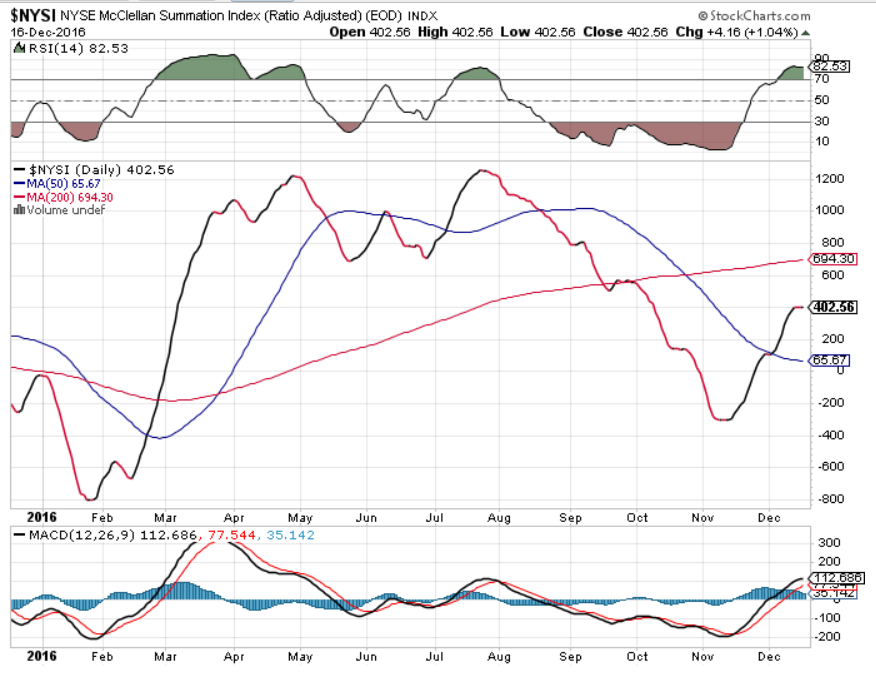
Analysis(This chart and others below, are courtesy of QCharts.com.)
Daily chart
Since its beginning at 1810, the S&P 500 chart pattern is taking on the appearance of a diagonal (an ending diagonal for the bull market?). If we cannot improve on this formation, considering the negatives pointed out in the Market overview, and especially if we turn the current consolidation into a correction and break out of the short-term channel -- which itself looks like a diagonal –the bearish case will have strengthened. Of course, that’s a lot of “ifs” and it would take an extension of the declinebelow the dashed line before things really start getting bearish.
A look at the oscillators shows that over the short term, the A/D indicator has the same sluggish pattern that appears in the intermediate chart of the NYSI above. The MACD has turned down and may be ready to make a bearish cross, but it topped without showing negative divergence and would have to decline a good deal more to show some real weakness. The SRSI did give a sell signal as it made a bearish cross and, more importantly, it exhibits negative divergence in its slower (blue) MAwhich has stopped going up but cannot roll over unless the index declines further.
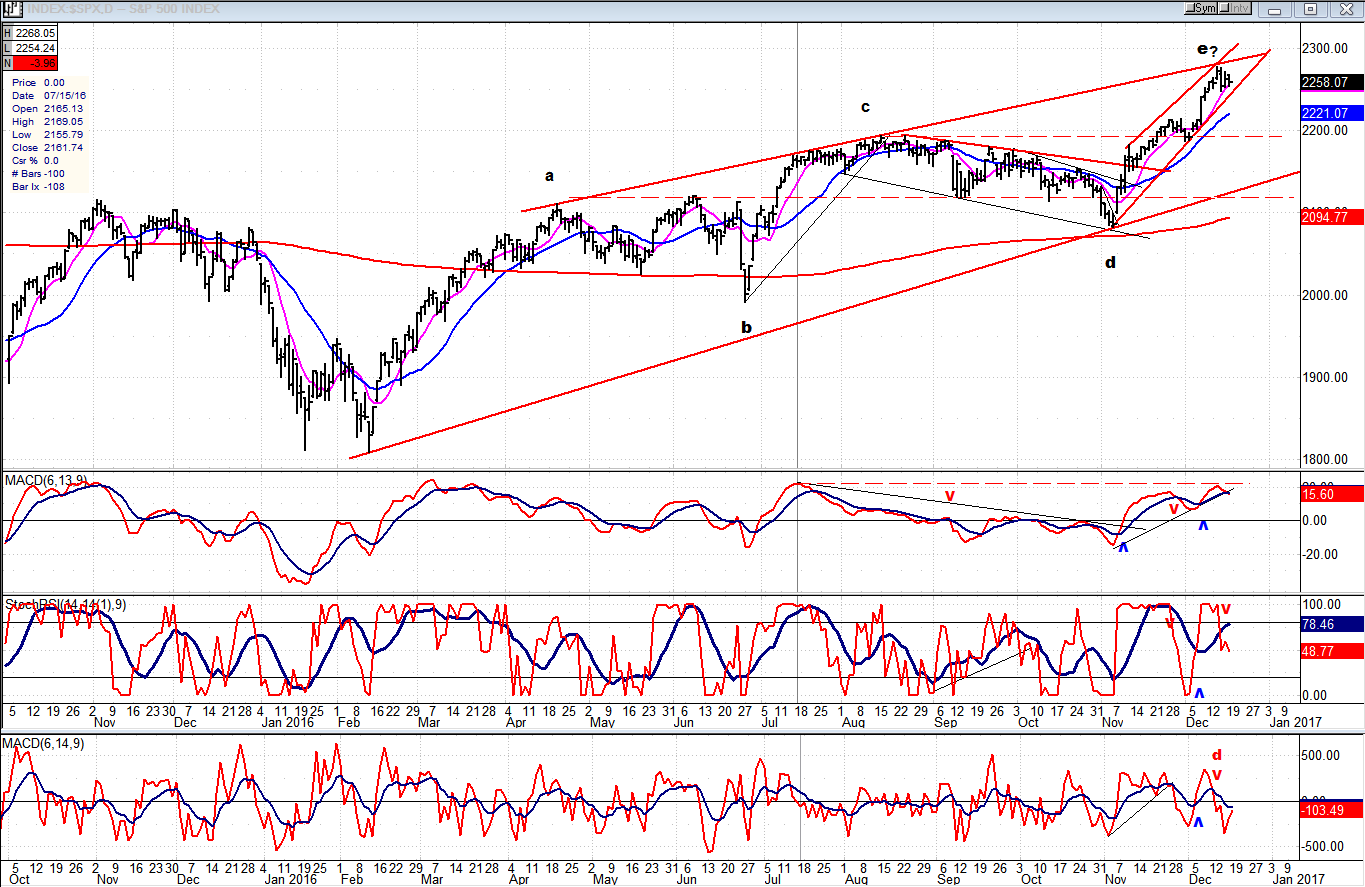
Hourly chart
After having spent most of Friday’s session going sideways in a very narrow range, the hourly chart looks ready to turn and, at the very least, challenge the strong resistance level of 2270ish. I have drawn two converging channel lines which suggest that the short-term pattern is also beginning to look like a diagonal. Prices could push a little higher without altering the formation, but if much more strength develops, not only the short-term diagonal would be at risk, but the intermediate one as well.
Enough accumulation has already taken place to send prices up to the 2300 level if S&P 500 can get past the 2270 and 2286 resistance levels. In fact, there is enough accumulation to move up to 2330, but the pattern is divided into several short projection phases, and a resumption of the advancecould stop after completing any one of them.
While the daily oscillators are still in a decline, the hourly are oversold and ready to turn up. This is particularly evident in the A/Ds which remained positive during all of Friday’s trading.
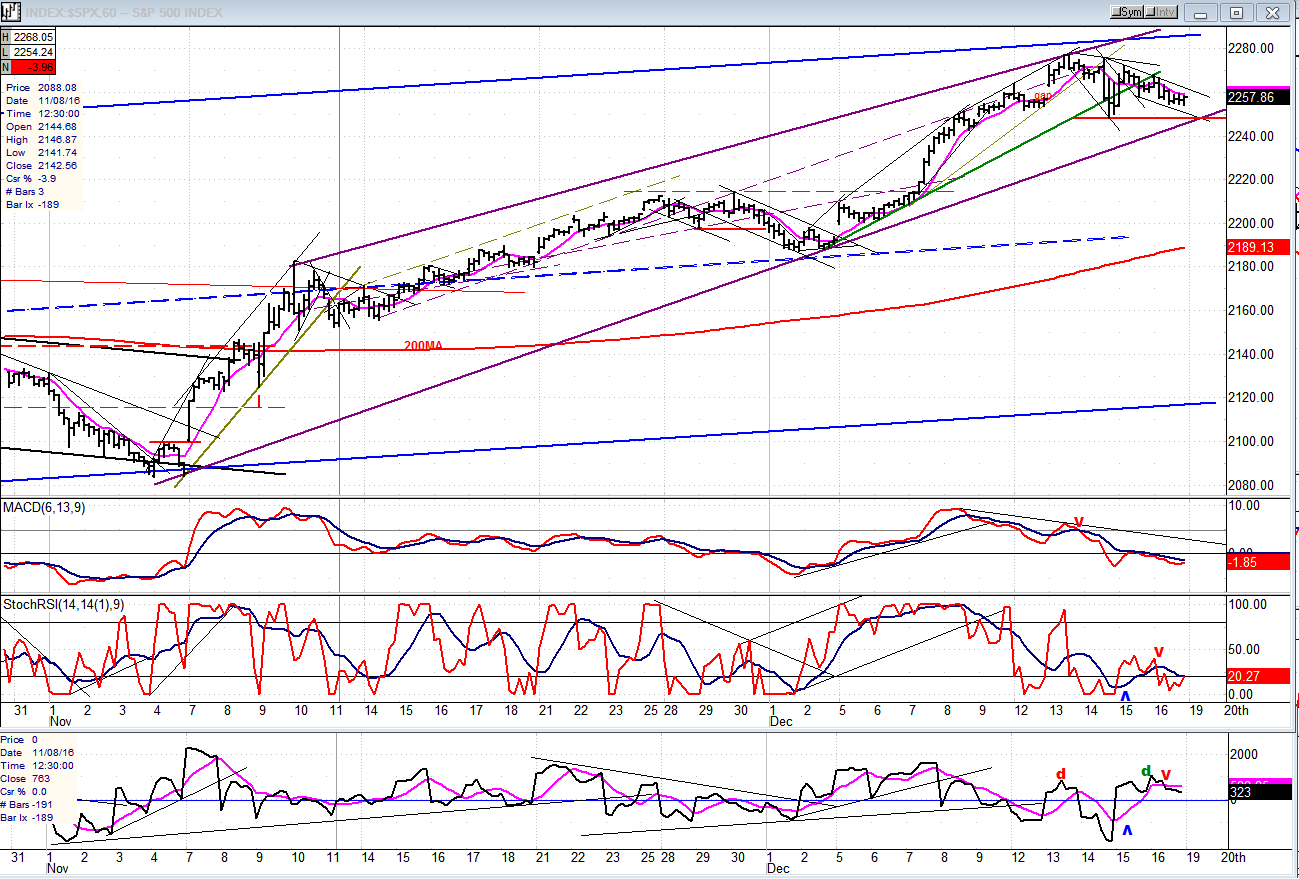
An overview of some major indexes (Weekly charts)
A consolidation of a few days has not changed the weekly pattern, and it remains essentially the same as it was last week. The PowerShares QQQ Trust Series 1 (NASDAQ:QQQ) did make a slightly new high, but it is not yet enough to significantly lessen its relative weakness to S&P 500 .
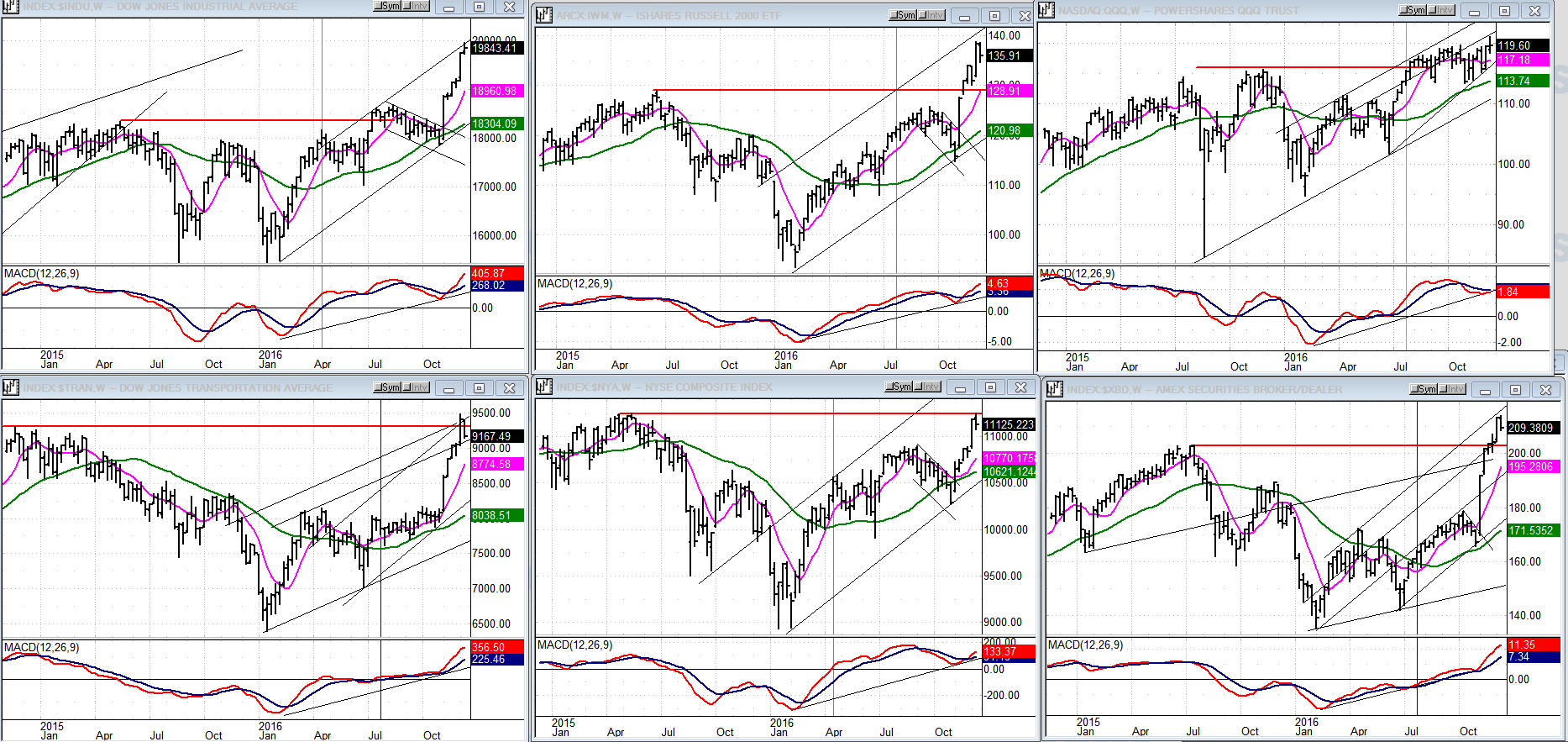
PowerShares DB US Dollar Bullish (NYSE:UUP) (dollar ETF)
UUP took advantage of the rate increase to surge to a 7-year high. It could push to about 27.00 before beginning to consolidate. But we need to keep in mind that higher levels are still likely, with prices eventually reaching at least 28-29.
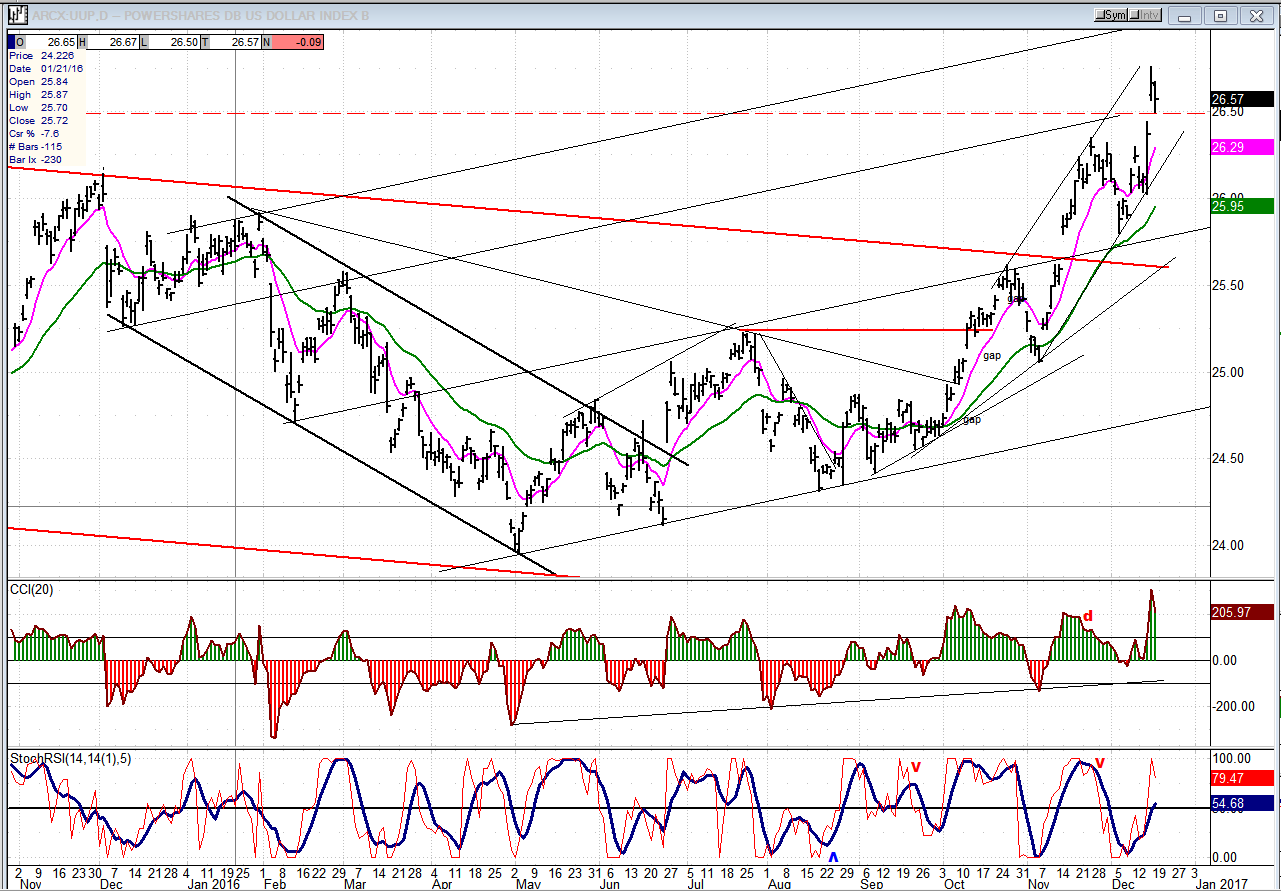
GDX (Gold Miners ETF (NYSE:GDX))
GDX’s reaction to the interest rate hike was the exact opposite of UUP’s. It has now declined to the lower projection levels of 18.50-19.00 which were discussed in previous letters. Unfortunately for the gold enthusiasts, this may not be the end of the correction and, after a rebound of sorts, there could be another drop to about 16.00. Some real buying causing a break of the major downtrend line would need to take place before we could say that an important reversal has occurred.
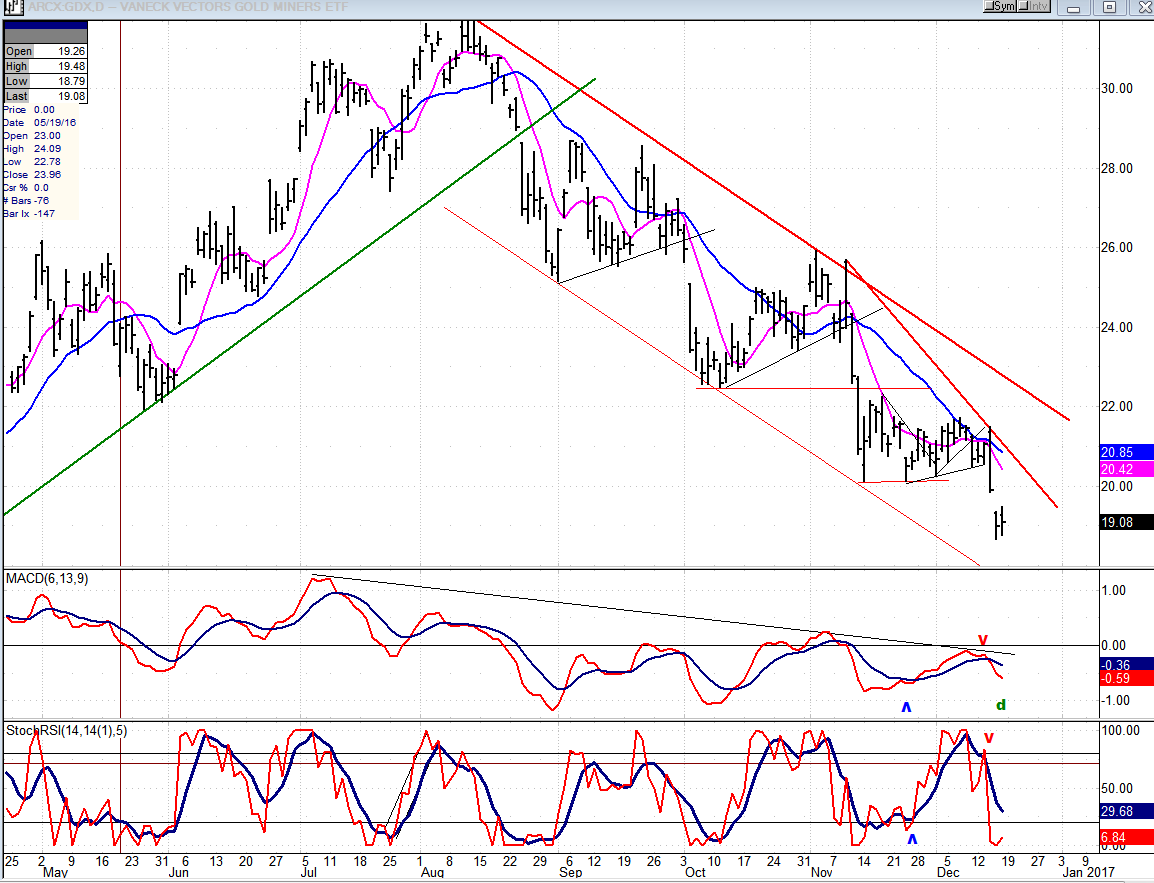
Note: GDX is now updated for subscribers several times throughout the day (along with S&P 500 ) on Marketurningpoints.com.
USO (NYSE:USO) (U.S. Oil Fund)
USO has come to a decision point whereby it must show some immediate new strength in order to achieve a breakout of its base, or it will fall back to the level of its previous short-term lows.
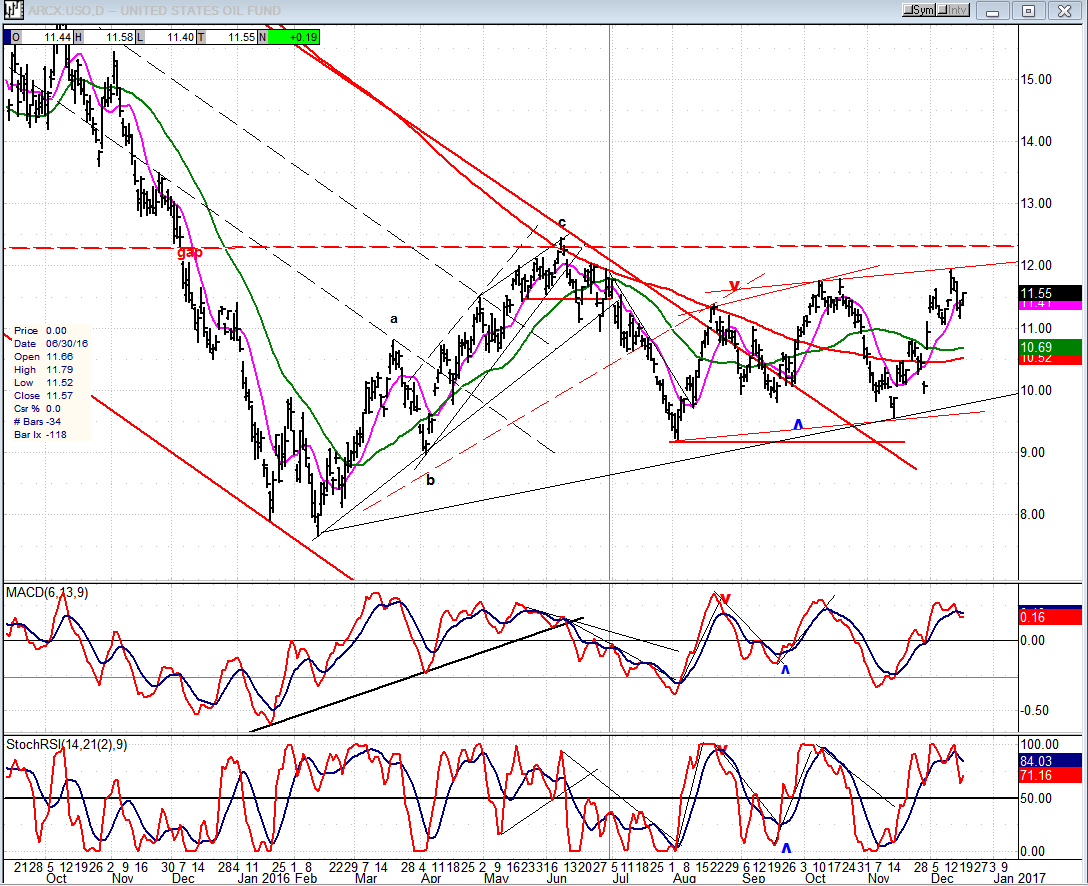
Summary:
S&P 500 is consolidating after reaching the lowest of the projections given in the previous letter. It is not clear if the index is already capable of extending its move beyond the 2270 resistance level. The hourly indicators appear ready to push higher, but the daily are still correcting. A little more time is needed to decide. In any case, it would be premature to call this the start of a major top.
